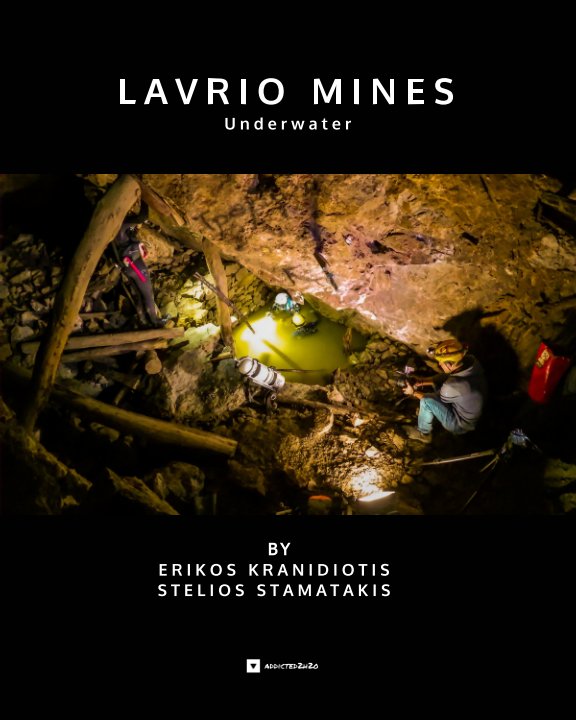Lavrio Mines
Underwater
de E. Kranidiotis, S. Stamatakis
Este es el precio que tus clientes ven. Editar lista de precios
Este libro está disponible para comprarlo en Amazon
Acerca del libro
The discovery of a flooded arcade and the need for further exploration led cave divers Erikos Kranidiotis and Stelios Stamatakis to explore these galleries further. In 2019 and 2020, exploratory dives were carried out in several sections of the mines at Lavrio in Greece, capturing amazing images of these underwater galleries for the very first time.
Lavrio was a center of attraction for mining activities since the ancient times. The geologic activity between the Eurasian and African tectonic plates formed the Attica-Cyclades Geological Arc, essentially making Lavrio a mineral-rich area. The ore veins were already visible superficially from the Neolithic Age. The first organized inhabitants of Attica extracted natural copper from the galleries of Thorikos to manufacture tools. Mining activity intensified from 3200 BC and reached its peak in the 5th and 4th century BC in the time of the Athenian Republic, making Lavrio and its surrounding area an industrial center of antiquity. After centuries of neglect, the mines were reopened in the 19th century, industrial activity supported the Greek state economy, and the Lavrio Mining Companies were the industrial superpowers of this era until almost the late 20th century.
The book was written following the successful completion of the Lavrio Mines underwater exploration, which took part in 2019 and 2020, and will accompany the film documentary to be released in 2021. It comprises of stories from each of the ten mines including historical information on each site the team explored. Images from the expedition, 3D maps from two of the mines which were mapped, and a firsthand account on the challenges faced to complete highly demanding dives in a very difficult and somewhat extreme environment.
Lavrio was a center of attraction for mining activities since the ancient times. The geologic activity between the Eurasian and African tectonic plates formed the Attica-Cyclades Geological Arc, essentially making Lavrio a mineral-rich area. The ore veins were already visible superficially from the Neolithic Age. The first organized inhabitants of Attica extracted natural copper from the galleries of Thorikos to manufacture tools. Mining activity intensified from 3200 BC and reached its peak in the 5th and 4th century BC in the time of the Athenian Republic, making Lavrio and its surrounding area an industrial center of antiquity. After centuries of neglect, the mines were reopened in the 19th century, industrial activity supported the Greek state economy, and the Lavrio Mining Companies were the industrial superpowers of this era until almost the late 20th century.
The book was written following the successful completion of the Lavrio Mines underwater exploration, which took part in 2019 and 2020, and will accompany the film documentary to be released in 2021. It comprises of stories from each of the ten mines including historical information on each site the team explored. Images from the expedition, 3D maps from two of the mines which were mapped, and a firsthand account on the challenges faced to complete highly demanding dives in a very difficult and somewhat extreme environment.
Sitio web del autor
Características y detalles
- Categoría principal: Historia
- Categorías adicionales Deportes y aventura, Artesanías y pasatiempos
-
Características: Vertical estándar, 20×25 cm
N.º de páginas: 70 -
ISBN
- Tapa blanda: 9781715928735
- Fecha de publicación: nov. 27, 2020
- Idioma English
- Palabras clave Greece, lavrio mines, exploration, mine diving
Ver más


